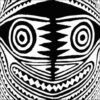Austral Islands Art and Artifacts
Austral island Art and Artifacts made for indigenous use are extremely rare and highly collectable. Despite being a part of Central polynesia very little is known about the customs or religeous practices of this group of islands.
TheAustral islands are by far best known for their exquisitly carved paddles. Even though the majority were made for sale they are still sort after.
I buy and sell Austral Islands art and Artifacts either outright or sell on a commission basis. Just send me a photo of your Austral Islands Art of Artifact and I will give you an idea of what I think it is worth.
I hope you enjoy the article and please feel free to share.
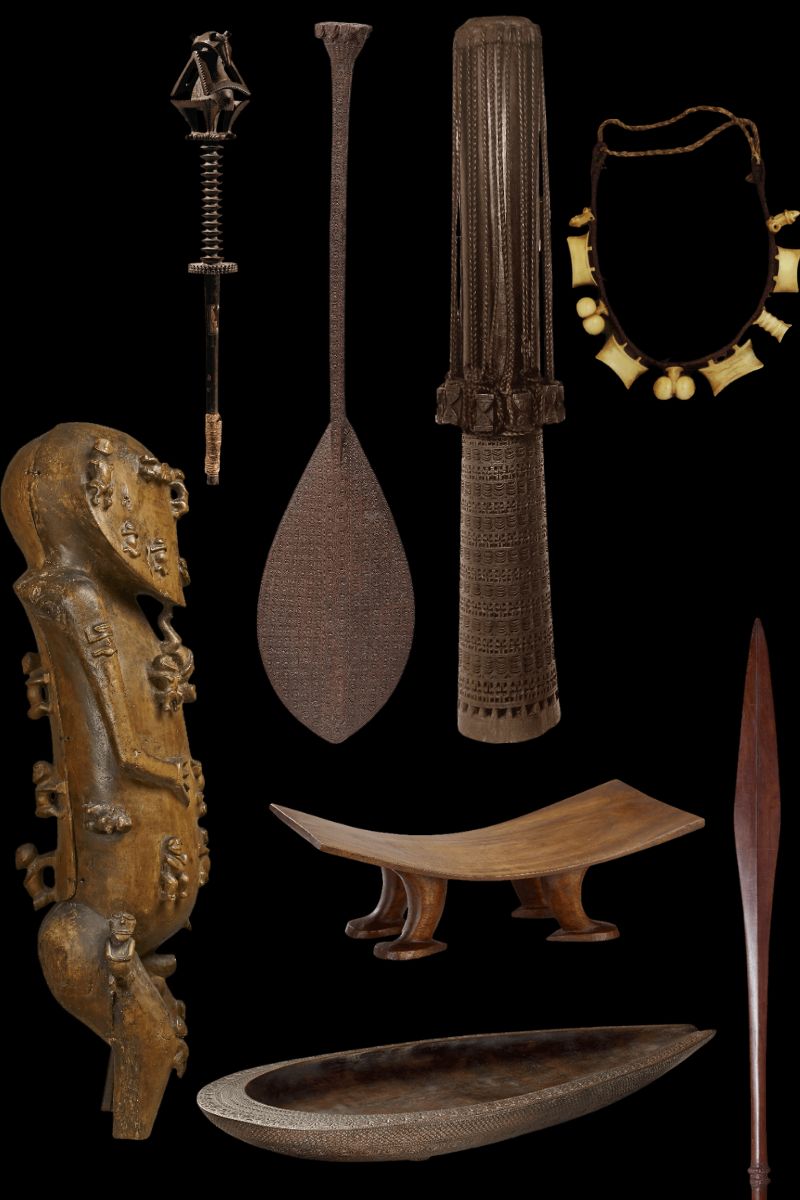
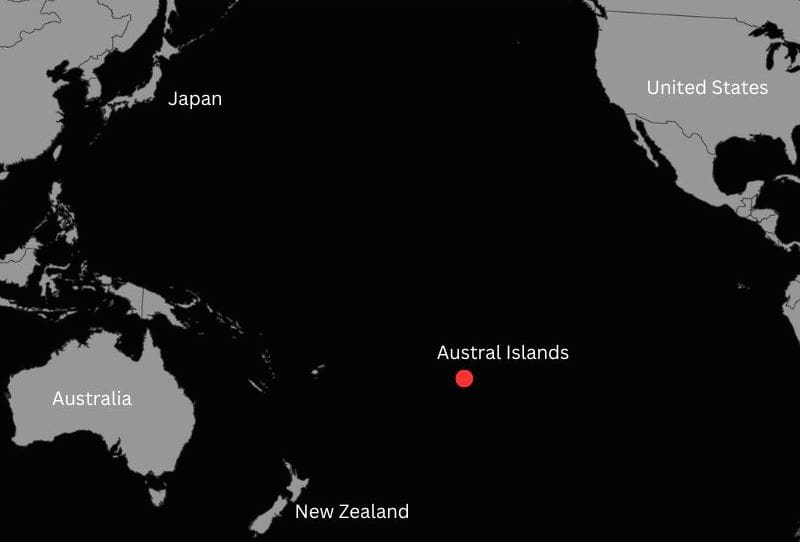
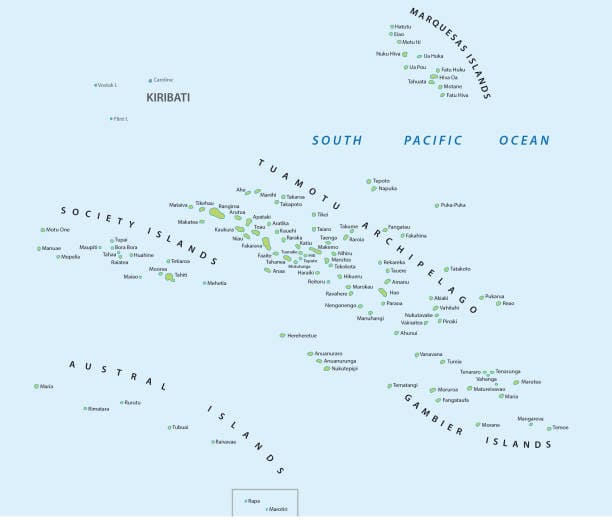
Background of Austral Islands art and Artifacts
European contact with the Austral Island was sporadic and very little recorded about their traditional culture.
Austral Islands Art and Artifact Types
Austral Islands Sculpture
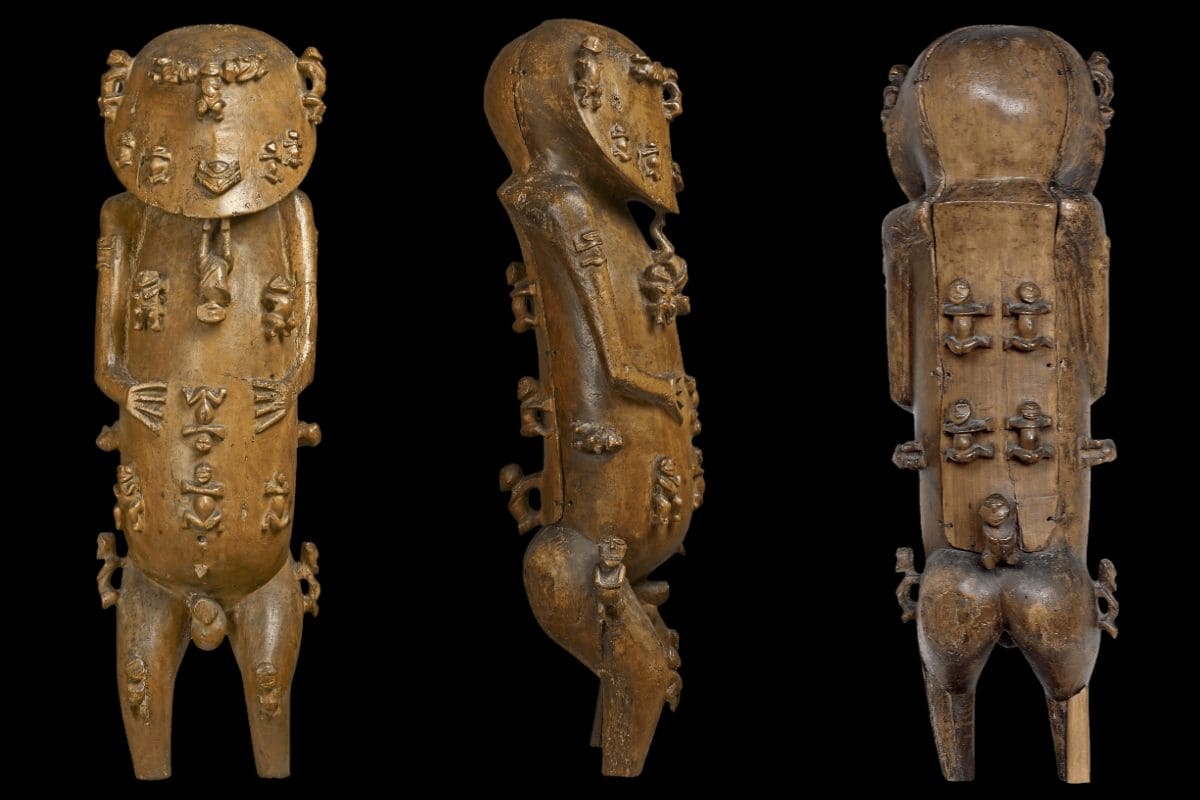
Austral Islands Sculpture
Very little Austral Islands sculpture exists. What does exist however is arguably the pinnacle of oceanic art.
This god figure known as A’a, carved in anthropomorphic form with 30 small figures over surface of the body and making up the facial features. A lidded cavity in back.
Presented on Raiatea to representatives of the London Missionary Society by a group of people from Rurutu in 1821 as a sign of their conversion.
The Austral island did have god staffs but very few are known. Free standing carving is rare and virtually nothing known about the pieces that do exist.
If it wasn’t for the made for trade pieces made between 1820 and 1840 virtually no art would be attributed to this area.
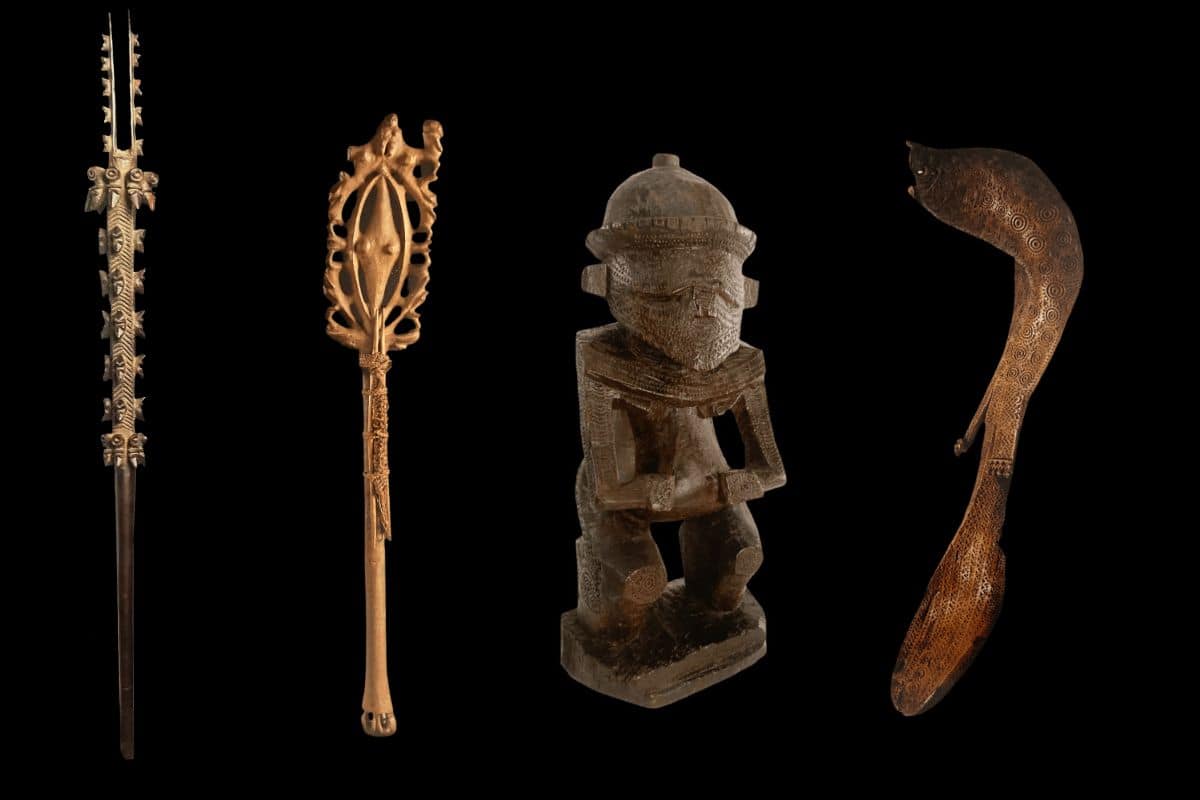
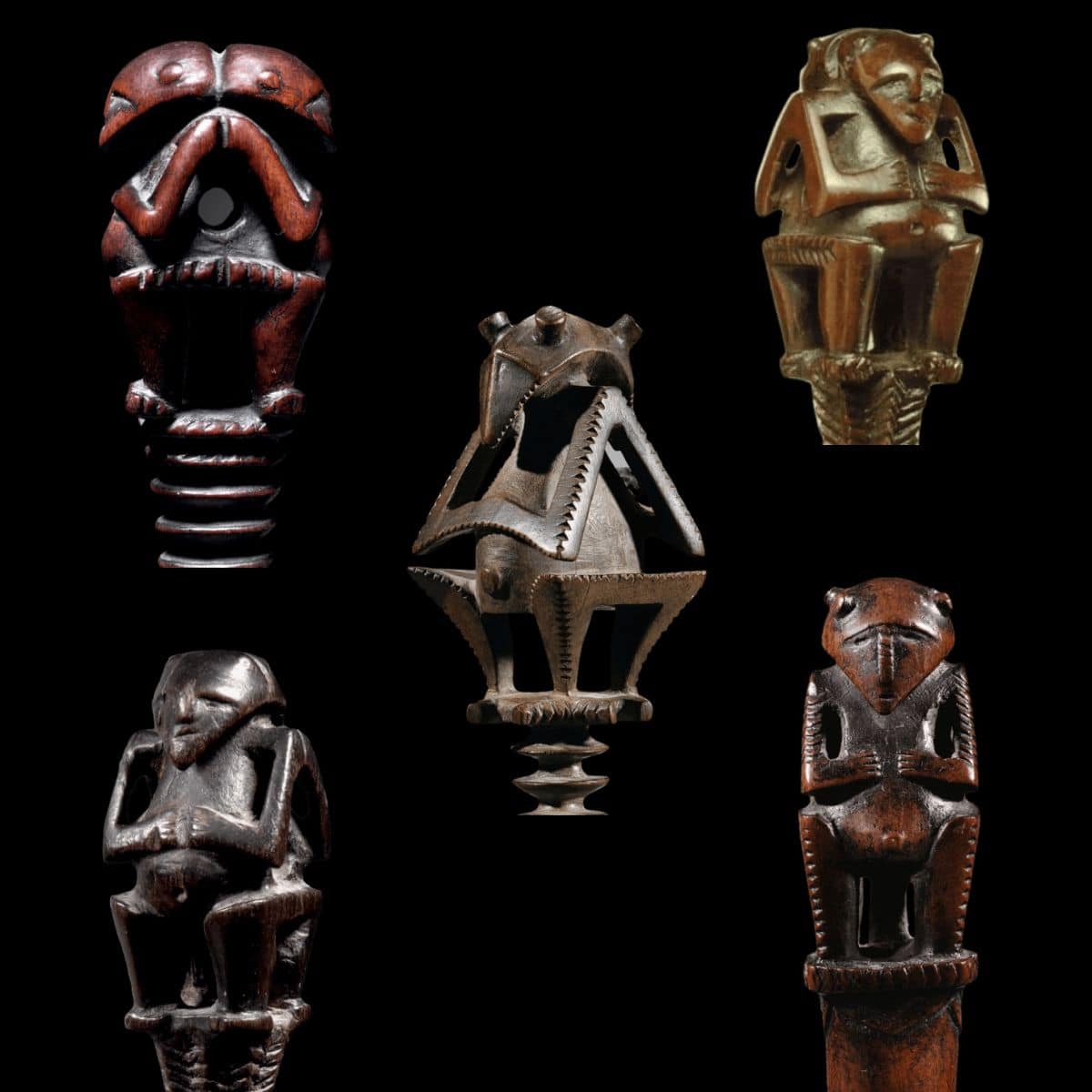
Austral Island Fly Whisks
Fly Whisks were a sign of chiefly status. The tops were superbly carved with janus depictions of a deity.
They are rare beautiful and very collectable.
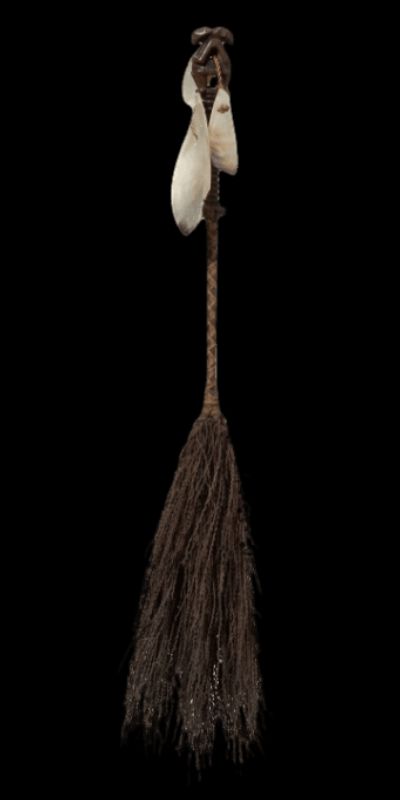
Austral Island Art Recommended reading

Austral Island paddles
Almost all Austral island paddles were made to sell to early visitors. In general older examples have round pommels with numerous dancing figures. They tend to have quite small blades on a long shaft.
Later examples are larger, have sunburst motifs and may even have multiple handles.
All Austral island Paddles though are have old collection because they were only produced between about 1820 and 1840.
Pre-european paddles have just two or four janus figures and minimal decoration to the blade. They may have been used for ceremonial dancing.
These early examples also more clearly show the faces of the diety where as later examples are more abstract.
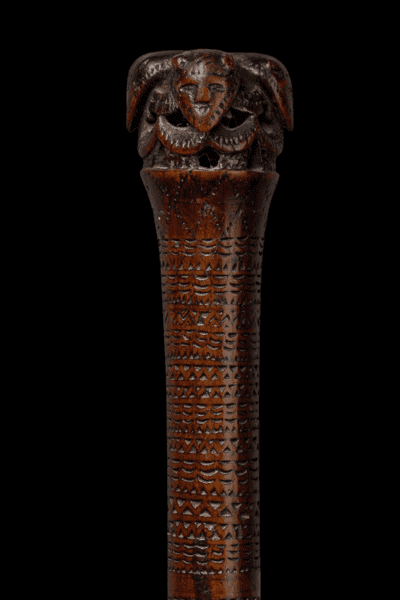
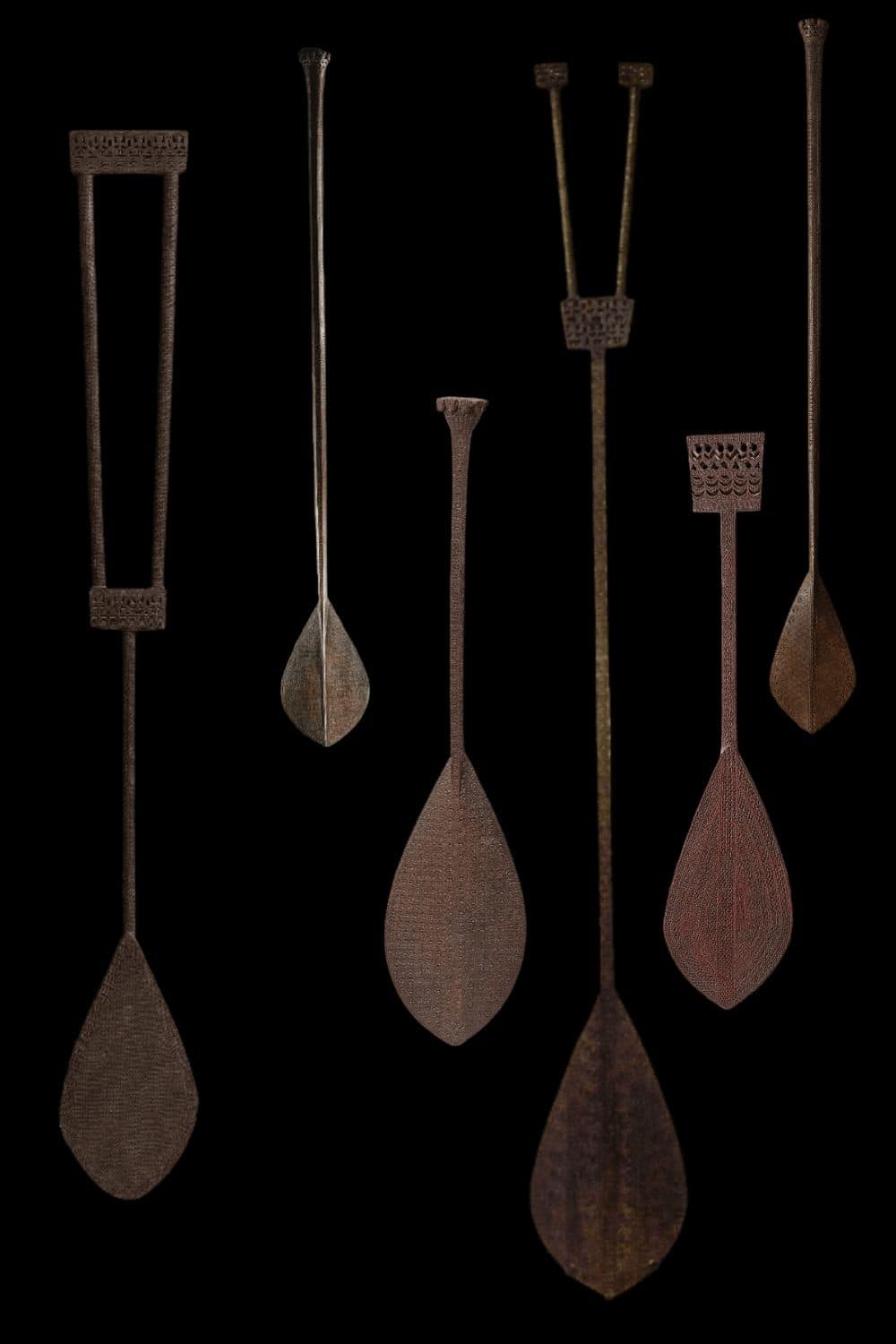
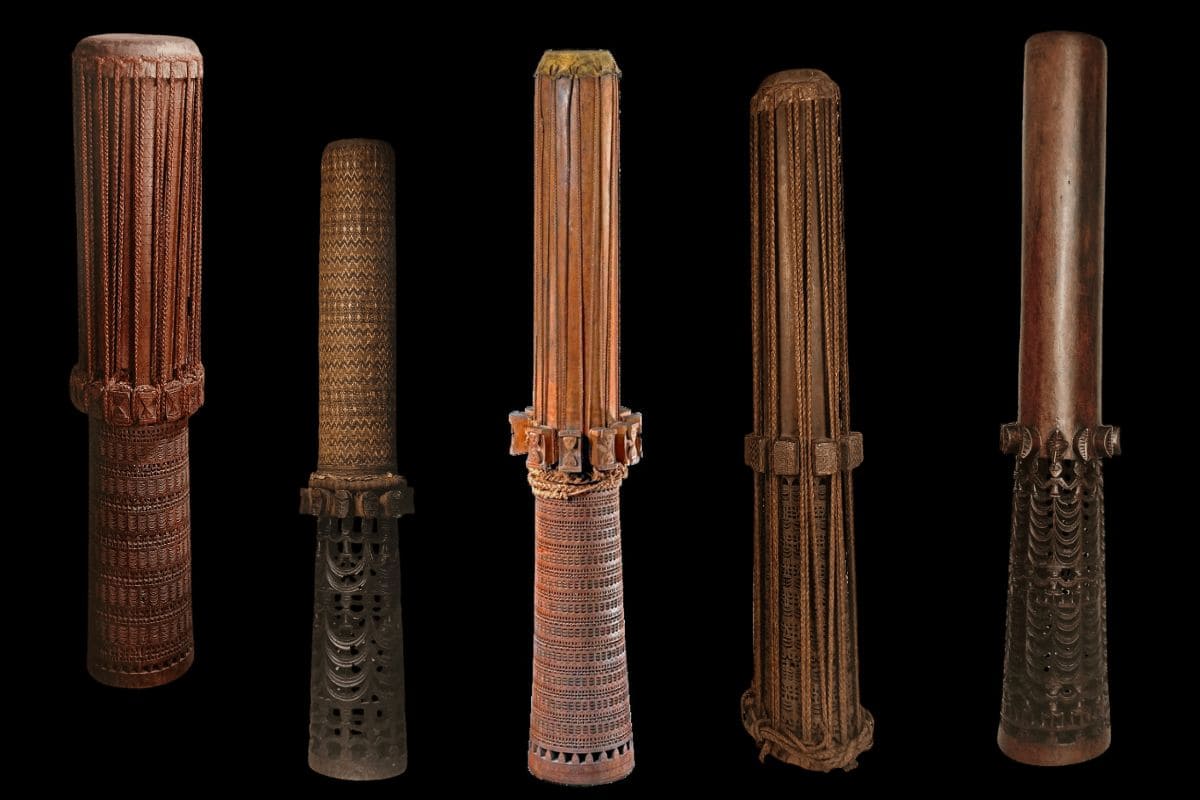
Austral Islands Drums
The Austral Island drums are rare even in museum collections. They are however superbly made and highlight the craftsmanship of this group of Islands. The bottom half of the drums are decorated with openwork dancing figures or motifs that represnt dancing figures.
Height 120cm – 150cm
Austral Islands Bowls
The Austral Island bowls are rare and the majority are likely made for sale or trade, Bowls with carving on the inside are impractical for indigenous use.
They are carved in similar designs as the designs as found on an Austral islands Paddle blades.
Length 30cm – 80cm
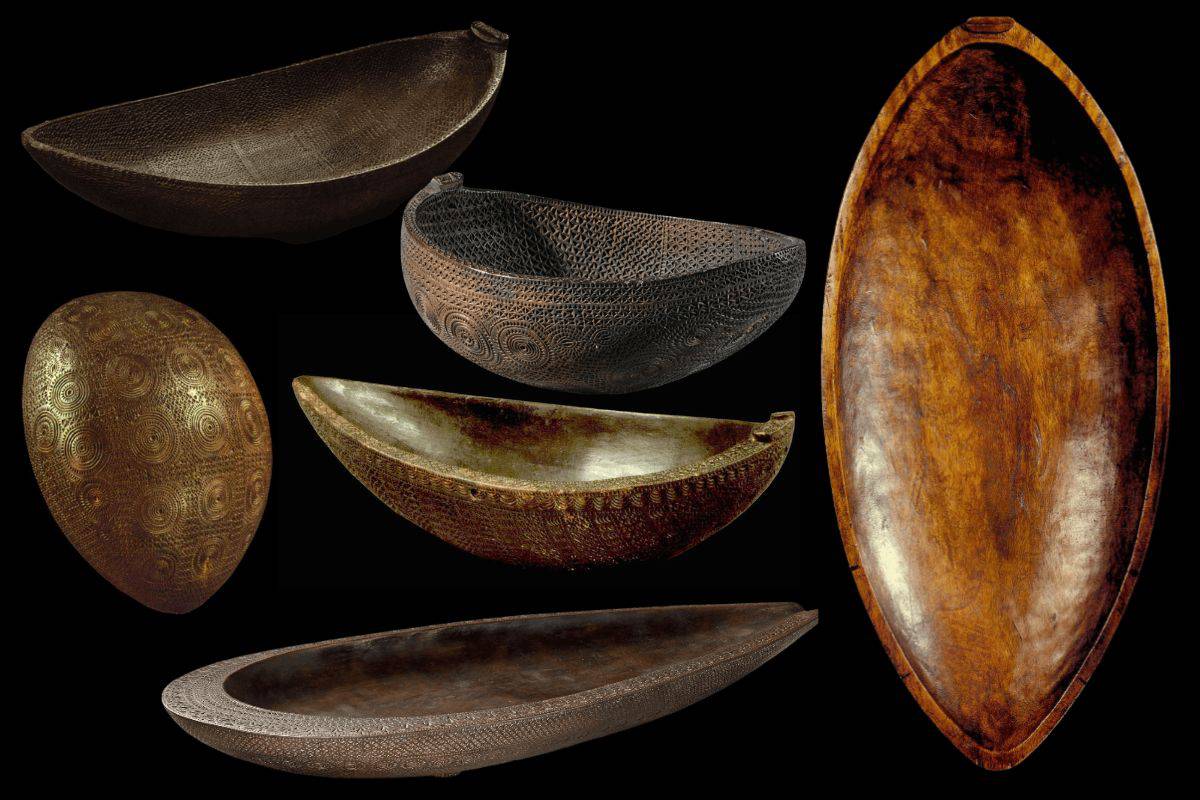
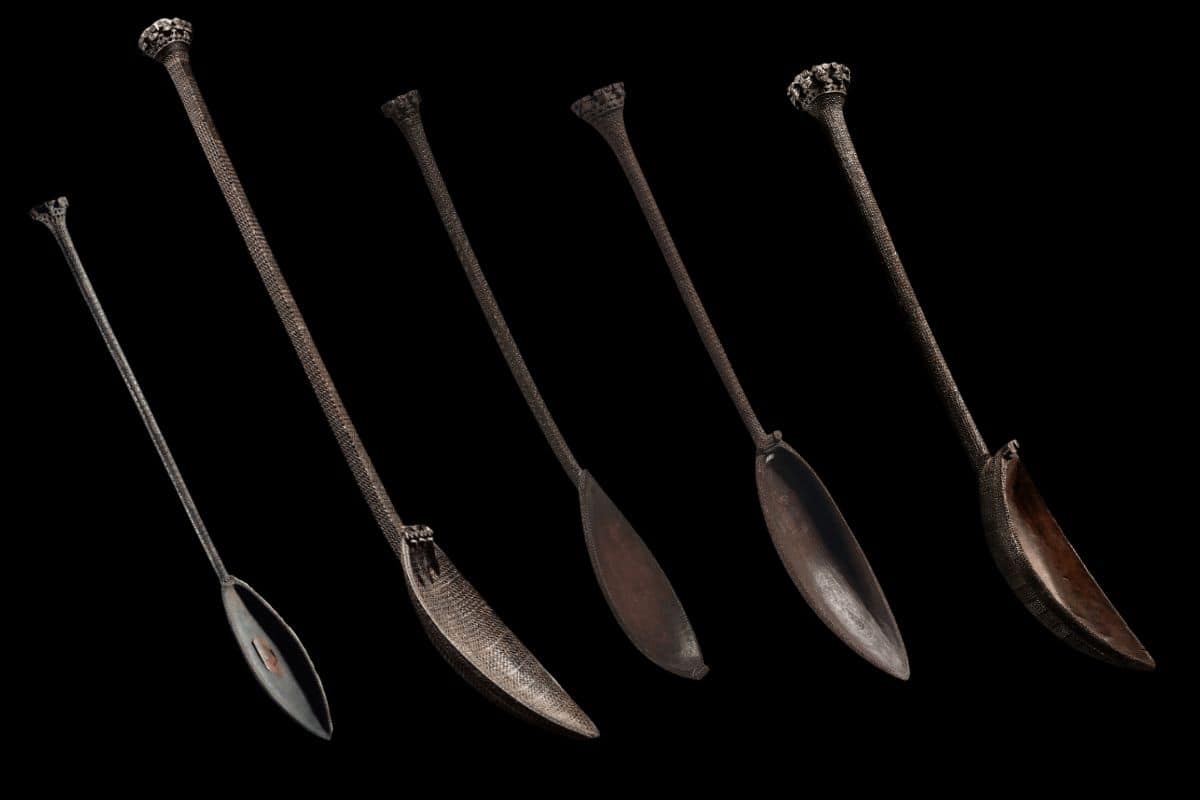
Austral Islands Scoops
Austral Island eremonial scoops are far rarer than paddles. It is likely that most of these were indigenously used. Later scoops tend to be larger and may have carving on the inside of the scoop blade.
It is not clear what dish these scoops were used to make but are likely to have been used in ceremonial feasts.
Length 80cm – 120cm
Austral Islands Stools
The Austral island stool was used by chiefs and are all of a very similar design. They are collectable but quite common. There manufacture probably did not stop due to western influence like other objects because of their secular nature.
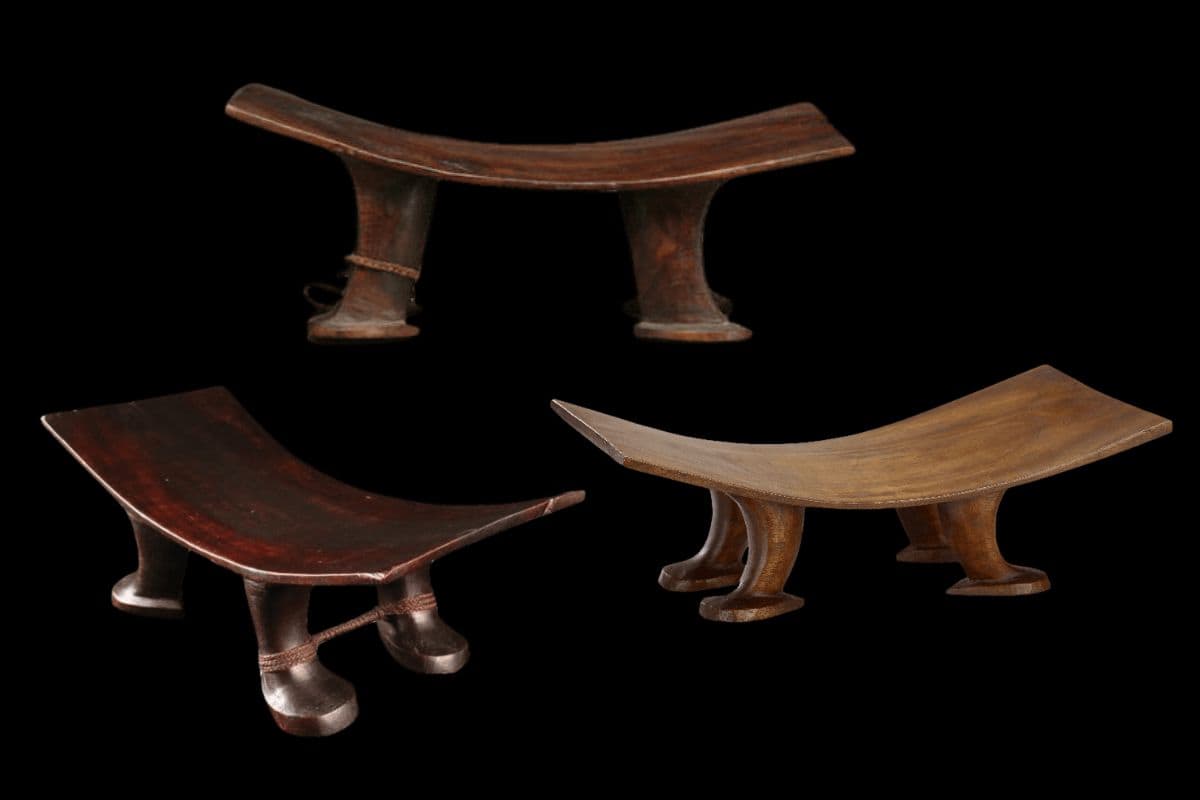
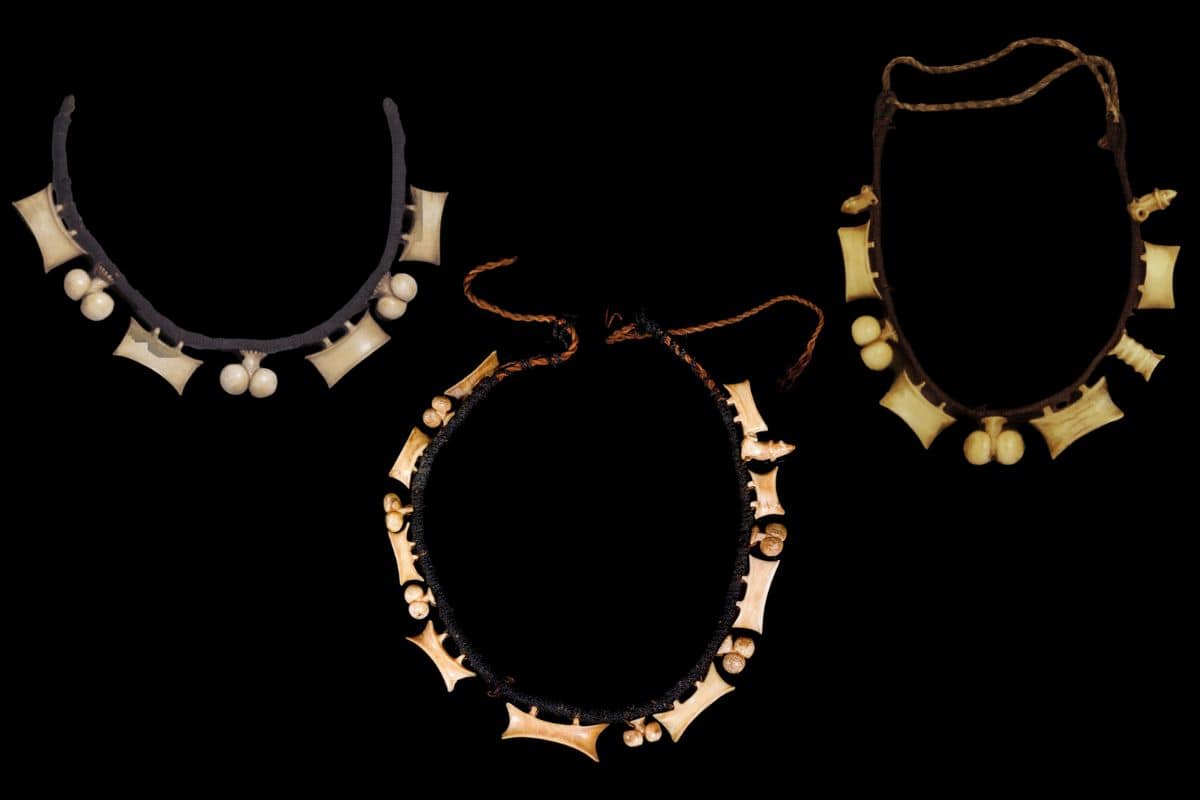
Austral Islands Necklaces
These necklaces were emblems of the chief’s virility, rank and wealth. The amulets were strung by loops of sennit on a sennit cord wrapped with braided human hair. Whales throughout Polynesia were manifestations of the ocean god Tangaloa. Whalebone and ivory were thus considered sacred and infused with this god’s divine essence.
Austral Islands Weapons.
Austral Islands Clubs
Impressive spear clubs were seen on Rurutu in 1769, during Cook’s First Voyage. The naturalist Joseph Banks noted that “Their arms were long lances, made of the Etoa [Casuarina equisetifolia], the wood of which is very hard; they were well polished and sharpened at one end. They are rare and often cut down for transport back on a ship.
Although spear like they are unlikely to have been thrown. They are superbly made and collectable.
Length 2.8m – 3.2m
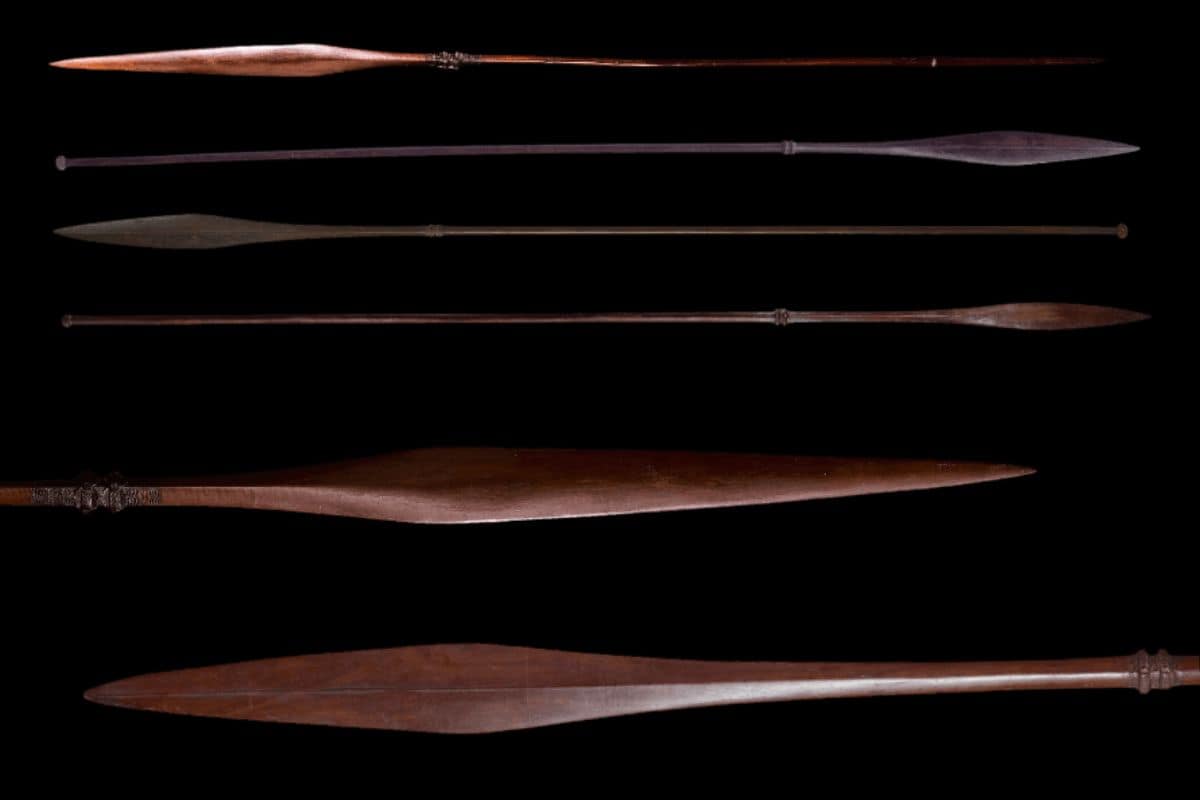
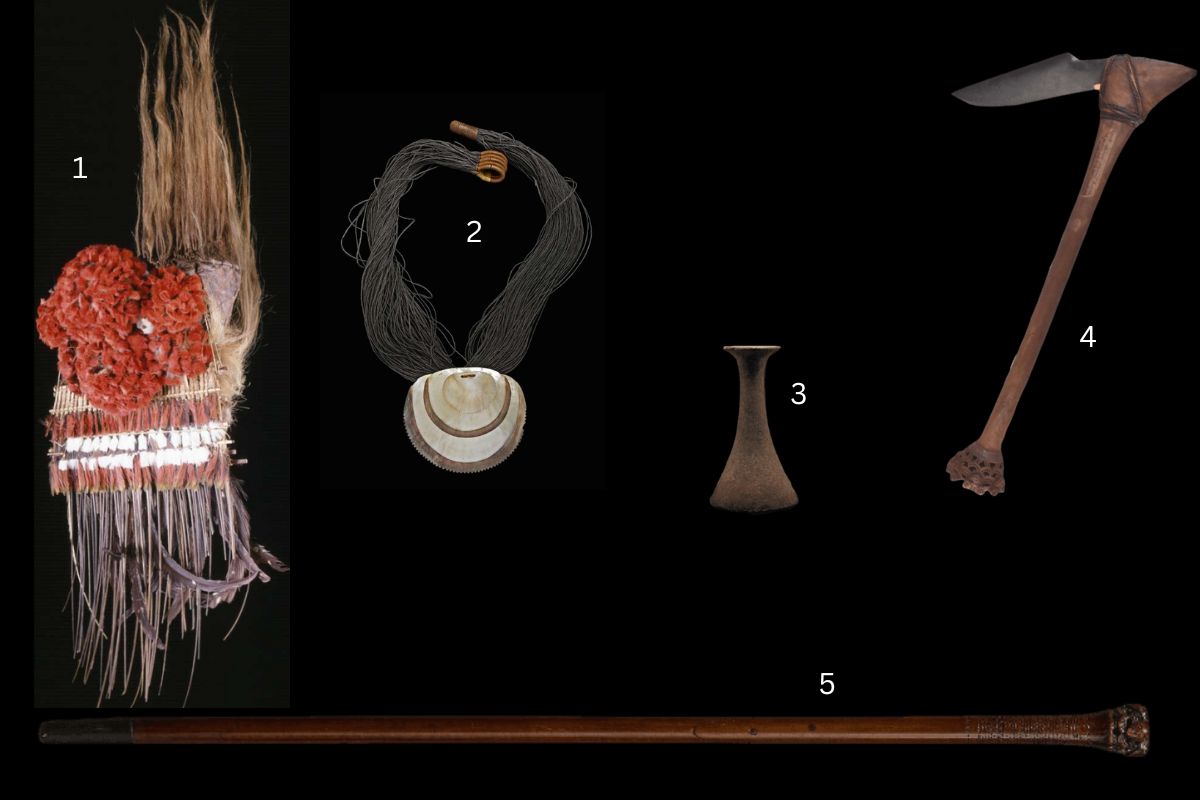
1. Austral Islands Headdress
2. Pearl shell necklace
3. Stone pounder
4. Adze
5. Chiefs staff
